Урок на тему "Міжнародні організації"
Level: B1
Theme International organizations: UNESCO, UNISEF, UN, EU.
Objectives
- To practice pupils’ skills using words in their oral speech;
- To motivate pupils cognitive and creative thinking;
- To train critical thinking;
- To develop cultural competence;
- To develop pupils’ communicative skills;
- To develop the skills of reading, listening and speaking’
- To respect our native country
Equipment: presentation “International organizations”
Participants: the host, different experts, the audience.
Type of the lesson: talk show
Integrated lines: 1, 2
Presedure
The host of the programme: Good day ladies and gentlemen! We are starting our new talk show with a very incredible name “View to the Future”. The participants of our programme are young people who will live and work in future Ukraine to create economiacal. Political and cultural development of our country.
We’ve invited some guests to our studio. They are our experts and the will share with us some information they have prepared.
The theme of our first show is “International organizations”. We’ll know about some of them and answer for the main question of our programme “Are international organizations important to Ukraine’s development?”
So let’s start. And we’ll begin our conversation with answering for the question “What is an international organization?”. Welcome our honorable expert.
The expert: An international organization is an organization with an international membership, scope, or presence. There are two main types:
- International nongovernmental organizations (INGOs): non-governmental organizations (NGOs) that operate internationally. These include international non-profit organizations and worldwide companies such as the World Organization of the Scout Movement, International Committee of the Red Cross and Médecins Sans Frontières.
- Intergovernmental organizations, also known as international governmental organizations (IGOs): the type of organization most closely associated with the term 'international organization', these are organizations that are made up primarily ofsovereign states (referred to as member states). Notable examples include the United Nations (UN), Organization for Security and Co-operation in Europe (OSCE), Council of Europe (COE), International Labour Organization (ILO) andInternational Police Organization (INTERPOL). The UN has used the term "intergovernmental organization" instead of "international organization" for clarity.
The first and oldest intergovernmental organization is the Central Commission for Navigation on the Rhine, created in 1815 by the Congress of Vienna.
The role of international organizations is helping to set the international agenda, mediating political bargaining, providing a place for political initiatives and acting as catalysts for coalition- formation. International organizations also define the salient issues and decide which issues can be grouped together, thus help governmental priority determination or other governmental arrangements.
Not all international organizations seek economic, political and social cooperation and integration
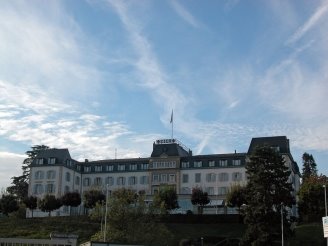
The headquarters of theInternational Committee of the Red Cross. Geneva (Switzerland) is the city that hosts the highest number of international organizations in theworld.
The host: Thanks for the information you’ve given for us. Now we exactly can say what is an international organization and what are their main types.
(The audience in studio answer for questions An international organization is an organization with an international membership, scope, or presence.
There are two main types: International nongovernmental organizations (INGOs): non-governmental organizations (NGOs) that operate internationally and international governmental organizations (IGOs)).
Now we are going to focus on some of the organizations such as UNESCO, UNISEF,UNO, EU.
And we invite our wonderful expert. He will tell us about UNESCO. So, welcome, please.
The expert: The United Nations Educational, Scientific and Cultural Organisation (UNESCO; French: Organisation des Nations unies pour l'éducation, la science et la culture) is a specialized agency of the United Nations (UN) based in Paris. Its declared purpose is to contribute to peace and security by promoting international collaboration through educational, scientific, and cultural reforms in order to increase universal respect for justice, the rule of law, and human rights along with fundamental freedom proclaimed in the United Nations Charter. It is the successor of the League of Nations' International Committee on Intellectual Cooperation.
UNESCO has 195 member states and ten associate members. Most of its field offices are "cluster" offices covering three or more countries; national and regional offices also exist.
UNESCO pursues its objectives through five major programs: education, natural sciences, social/human sciences, culture and communication/information. Projects sponsored by UNESCO include literacy, technical, and teacher-training programs, international science programs, the promotion of independent media and freedom of the press, regional and cultural history projects, the promotion of cultural diversity, translations of world literature, international cooperation agreements to secure the world's cultural and natural heritage (World Heritage Sites) and to preserve human rights, and attempts to bridge the worldwide digital divide. It is also a member of the United Nations Development Group.
UNESCO's aim is "to contribute to the building of peace, the eradication of poverty, sustainable development and intercultural dialogue through education, the sciences, culture, communication and information". Other priorities of the organization include attaining quality Education For All and lifelong learning, addressing emerging social and ethical challenges, fostering cultural diversity, a culture of peace and building inclusive knowledge societies through information and communication.
The broad goals and objectives of the international community—as set out in the internationally agreed development goals, including the Millennium Development Goals (MDGs)—underpin all UNESCO strategies and activities.
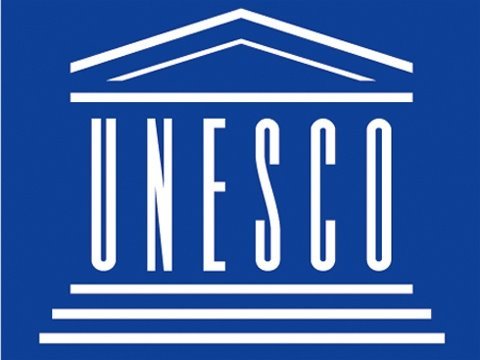
Let’s sum up the item and answer for the questions.
- What is UNESCO?
- Where is it?
- Why was it formed?
- What are its aims?
(Answers for the questions: UNESCO is a specialized agency of the United Nations (UN)
It was based in Paris.
It was formed to contribute to peace and security by promoting international collaboration through educational, scientific, and cultural reforms in order to increase universal respect for justice, the rule of law, and human rights along with fundamental freedom proclaimed in the United Nations Charter.
UNESCO's aim is "to contribute to the building of peace, the eradication of poverty, sustainable development and intercultural dialogue through education, the sciences, culture, communication and information".
The host: I see you are very clever and are ready to learn something new. Let’s continue our work and our next expert will tell us about UNISEF.
The expert: The United Nations Children's Fund (UNICEF /ˈjuːnɪsɛf/) is a United Nations (UN) program headquartered in New York City that provides humanitarian and developmental assistance to children and mothers in developing countries. It is a member of the United Nations Development Group.
The United Nations International Children's Emergency Fund was created by the United Nations General Assembly on 11 December 1946, to provide emergency food and healthcare to children in countries that had been devastated by World War II. The Polish physician Ludwik Rajchman is widely regarded as the founder of UNICEF and served as its first chairman from 1946. On Rajchman's suggestion, the American Maurice Pate was appointed its first executive director, serving from 1947 until his death in 1965. In 1950, UNICEF's mandate was extended to address the long-term needs of children and women in developing countries everywhere. In 1953 it became a permanent part of the United Nations System, and the words "international" and "emergency" were dropped from the organization's name, making it simply the United Nations Children's Fund, retaining the original acronym, "UNICEF".
UNICEF relies on contributions from governments and private donors. UNICEF's total income for 2015 was US$5,009,557,471. Governments contribute two-thirds of the organization's resources. Private groups and individuals contribute the rest through national committees. It is estimated that 92 per cent of UNICEF revenue is distributed to program services. UNICEF's programs emphasize developing community-level services to promote the health and well-being of children. UNICEF was awarded the Nobel Peace Prize in 1965 and the Prince of Asturias Award of Concord in 2006.
Most of UNICEF's work is in the field, with a presence in 190 countries and territories. UNICEF's network of over 150 country offices, headquarters and other offices, and 34 National Committees carry out UNICEF's mission through programs developed with host governments. Seven regional offices provide technical assistance to country offices as needed.
UNICEF's Supply Division is based in Copenhagen and serves as the primary point of distribution for such essential items as vaccines, antiretroviral medicines for children and mothers with HIV, nutritional supplements, emergency shelters, family reunification, and educational supplies. A 36-member executive board establishes policies, approves programs and oversees administrative and financial plans. The executive board is made up of government representatives who are elected by theUnited Nations Economic and Social Council, usually for three-year terms.
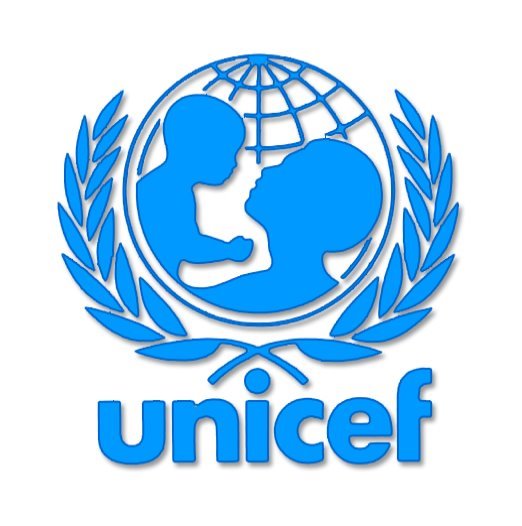
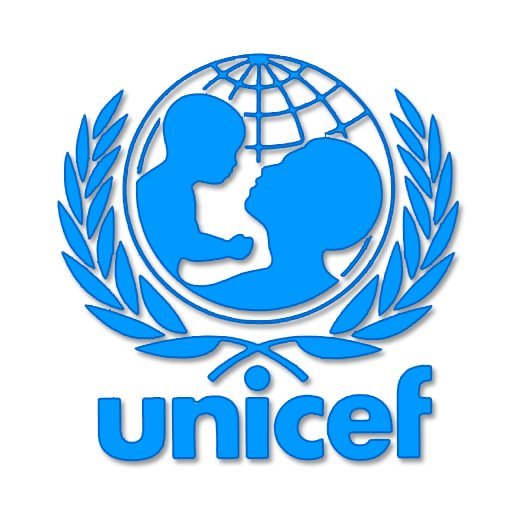
The host: Quickly answer for the questions. When was it created? - on 11 December 1946
Who was the founder of the organization? - The Polish physician Ludwik Rajchman
How does the organization work? - UNICEF relies on contributions from governments and private donors. UNICEF's total income for 2015 was US$5,009,557,471. Governments contribute two-thirds of the organization's resources. Private groups and individuals contribute the rest through national committees. It is estimated that 92 per cent of UNICEF revenue is distributed to program services.
Our UNO expert has useful facts. Let’s listen to him.
The expert:
![]()
![]()
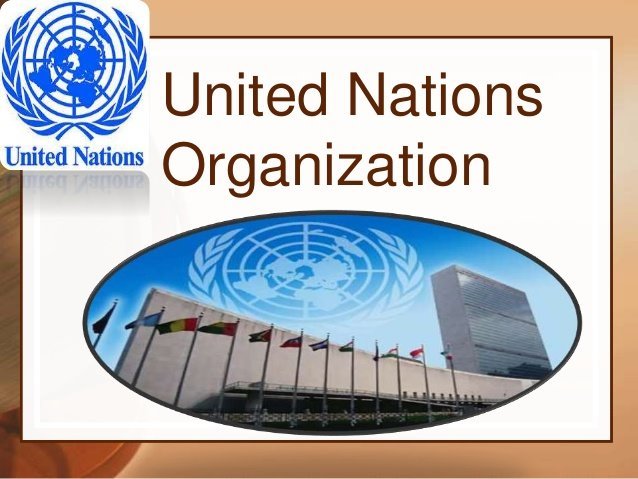
Overview
The United Nations is an international organization founded in 1945. It is currently made up of 193 Member States. The mission and work of the United Nations are guided by the purposes and principles contained in its founding Charter.
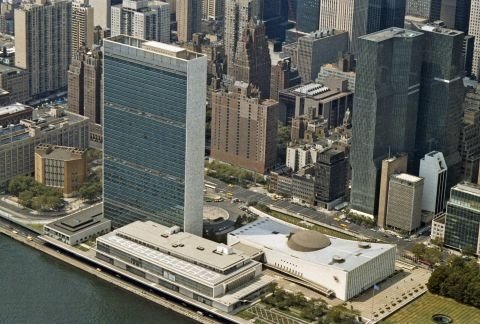
United Nations Headquarters in New York City.
Member States
Each of the 193 Member States of the United Nations is a member of the General Assembly. States are admitted to membership in the UN by a decision of the General Assembly upon the recommendation of the Security Council
United Nations Headquarters in New York City.
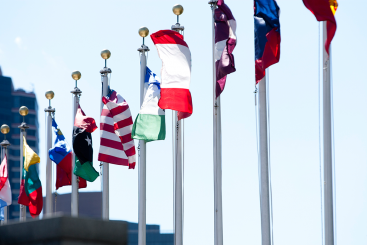
Main Organs
The main organs of the UN are the General Assembly, the Security Council, the Economic and Social Council, the Trusteeship Council, the International Court of Justice, and the UN Secretariat. All were established in 1945 when the UN was founded.
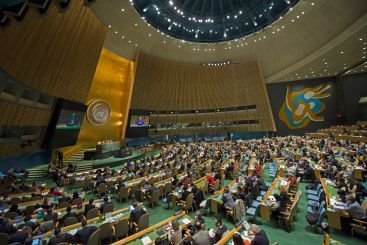
The UN General Assembly Hall during a vote in November 2014 to elect four judges to the International Court of Justice (ICJ)
Leadership
The Secretary-General of the United Nations is a symbol of the Organization's ideals and a spokesman for the interests of the world's peoples, in particular the poor and vulnerable. The current Secretary-General of the UN, and the ninth occupant of the post, is Mr. António Guterres of Portugal, who took office on 1 January 2017. The UN Charter describes the Secretary-General as "chief administrative officer" of the Organization.
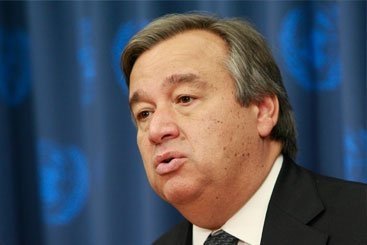
Secretary-General António Guterres addresses the high-level General Assembly plenary meeting on peacebuilding and sustaining peace.
Secretariat
The Secretariat, one of the main organs of the UN, is organized along departmental lines, with each department or office having a distinct area of action and responsibility. Offices and departments coordinate with each other to ensure cohesion as they carry out the day to day work of the Organization in offices and duty stations around the world. At the head of the United Nations Secretariat is the Secretary-General.
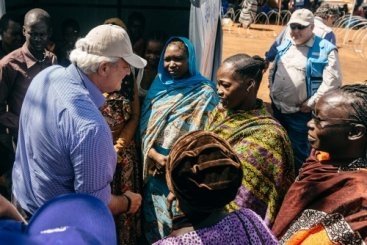
In August 2016 Emergency Relief Coordinator Stephen O’Brien visited a protected site in South Sudan, where more than 20,000 people were seeking protection as a result of conflict. Mr. O'Brien heads the Office for the Coordination of Humanitarian Affairs (OCHA) - the part of the United Nations Secretariat responsible for bringing together humanitarian actors to ensure a coherent response to emergencies.
Funds, Programmes, Specialized Agencies and Others
The UN system, also known unofficially as the "UN family", is made up of the UN itself and many affiliated programmes, funds, and specialized agencies, all with their own membership, leadership, and budget. The programmes and funds are financed through voluntary rather than assessed contributions. The Specialized Agencies are independent international organizations funded by both voluntary and assessed contributions.
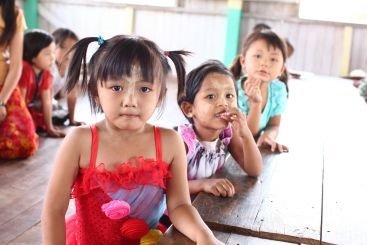
UNDP subsidized school fees and building repairs in Chin State, Myanmar
The host: We have the next questions for our audience.
- When was the organization founded? in 1945
- How many member states are there? 193 Member States
- What are the main organs? the General Assembly, the Security Council, the Economic and Social Council, the Trusteeship Council, the International Court of Justice, and the UN Secretariat.
- Who is the Secretary-General of the UN? He is Mr. António Guterres of Portugal, who took office on 1 January 2017.
![]()
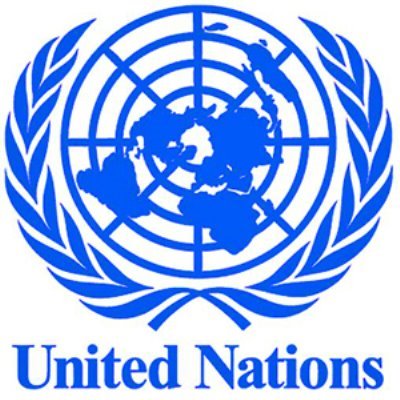
The host: Thank you for the full information about UN and I think we continue moving to our next station under the name EU. The EU expert will full us with the information about European Union. It must be interesting for us because our country is considered to be a European country and all of us are Europeans.
![]()
![]()
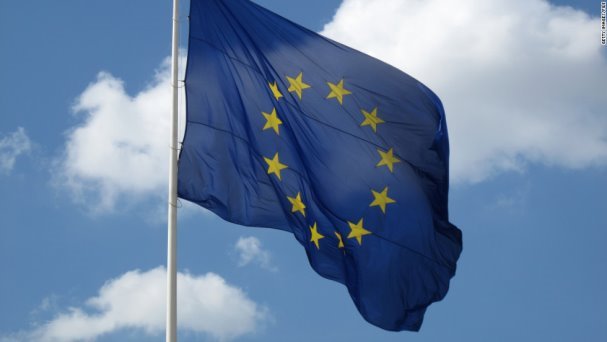
The expert
About the European Union:
The European Union is an international organization made up of 28 European countries.
It governs common economic, social and security policies of its member states.
According to the EU website, the objectives of the EU are to establish European citizenship, ensure freedom, justice and security, promote economic and social progress, and assert Europe's role in the world.
Membership is open to any country with a democratic government, a good human rights record, and sound economic policies.
The member states delegate sovereignty to the EU institutions to represent the interests of the European Union as a whole.
Decisions and procedures stem from treaties ratified by the member states.
The capital of the European Union is Brussels, Belgium.
The EU is run by five main bodies: European Parliament, Council of the Union, European Commission, Court of Justice, and the Court of Auditors.
An estimated 511.8 million people lived within the European Union as of January 2017.
The United States is the EU's main trading partner.
The Treaty of Lisbon amends the Treaty on European Union to explicitly recognize for the first time the member states' right to withdraw from the union. (Article 50, amended TEU)
- Any member state may decide to withdraw from the Union in accordance with its own constitutional requirements.
- A member state which decides to withdraw shall notify the European Council of its intention. In the light of the guidelines provided by the European Council, the Union shall negotiate and conclude an agreement with that State, setting out the arrangements for its withdrawal, taking account of the framework for its future relationship with the Union.
Timeline:
1957 - The European Economic Community (EEC) is created. The member countries are Belgium, France, Italy, Luxembourg, the Netherlands, and West Germany. The group aims to remove trade barriers and form a common market.
1973 - Denmark, Ireland, and the United Kingdom become member countries.
1981 - Greece becomes a member.
1985 - Spain and Portugal become members.
June 14, 1985 - Five of the 10 member states sign the Schengen Agreement, which eventually opens borders of agreeing member states, doing away with border controls. As of 2016, 26 countries belong to the Schengen Area.
February 7, 1992 - The Treaty on the European Union is signed in Maastricht (Netherlands) by leaders of the member states.
November 1, 1993 - The Maastricht Treaty enters into force.
1993 - The EC members at the time (Belgium, France, Germany, Italy, Greece, Spain, UK, Luxembourg, the Netherlands, Denmark, Ireland, and Portugal) extend their cooperation into the areas of justice and home affairs and a common foreign and security policy.
January 1, 1995 - Austria, Finland, and Sweden join the EU.
April 30, 2004 - A ceremony is held in Dublin, Ireland, marking the expansion of the EU from 15 to 25 members. The new members are Poland, the Czech Republic, Slovakia, Cyprus, Estonia, Hungary, Latvia, Lithuania, Malta, and Slovenia.
June 2004 - The member countries approve the text of the EU Constitution. It is signed by all the members in October 2004.
May 29, 2005 - The people of France (and its territories) vote against the European Union constitution in a referendum. (No = 54.87%/Yes = 45.13%)
June 1, 2005 - The Netherlands votes against the constitution in a referendum. All 27 members of the EU must pass the constitution for it to take effect. Either a national parliament can approve it or in some countries, the citizens vote on a referendum.
June 23, 2007 - European Union leaders in Brussels agree on an outline of a treaty that would replace the EU constitution rejected by French and Dutch voters two years ago.
June 19, 2008 - The European Union decides to lift diplomatic sanctions imposed on Cuba.
November 19, 2009 - Herman Van Rompuy, the Belgian Prime Minister, becomes the first president of the European Council under the Treaty of Lisbon. Catherine Ashton of the UK will be the first foreign minister.
December 1, 2009 - The Treaty of Lisbon comes into force, having been ratified by all European Union member states. It amends the Maastricht Treaty of 1992 and the Rome Treaty of 1957.
October 12, 2012 - Is awarded the Nobel Peace Prize for contributing to the advancement of peace, democracy and human rights in Europe.
June 25, 2013 - The European Union agrees to a new round of membership negotiations with Turkey.
July 1, 2013 - Croatia joins the EU as its 28th member.
April 1, 2014 - The European Union launches military operations to restore stability to the Central African Republic.
March 2015 - Iceland withdraws its request to be considered as a candidate for membership.
March 18, 2016 - The EU and Turkey reach an agreement on how to deal with a flood of Syrian refugees. The agreement stipulates that all migrants entering Greece from Turkey will be returned to Turkey. For every Syrian returned to Turkey from Greece, another Syrian will be resettled to the EU.
June 23, 2016 - The UK votes to leave the European Union. It will take at least two years to sort out the exit.
March 16, 2017 - Britain's exit from the European Union moves another step closer after the legislation enabling the country's departure is given royal assent by Queen Elizabeth II. The Queen's signature means that British Prime Minister Theresa May is now able to move forward and trigger Article 50, allowing formal talks to begin between Downing Street and the EU's 27 member states on the terms of the divorce, nicknamed "Brexit."
Presidencies of the Council of the European Union until 2020:
Malta: January-June 2017
United Kingdom: July-December 2017
Estonia: January-June 2018
Bulgaria: July-December 2018
Austria: January-June 2019
Romania: July-December 2019
Finland: January-June 2020
Current Members:
(Founding members in bold)
Austria
Belgium
Bulgaria
Croatia
Cyprus
Czech Republic
Denmark
Estonia
Finland
France
Germany
Greece
Hungary
Ireland
Italy
Latvia
Lithuania
Luxembourg
Malta
Netherlands
Poland
Portugal
Romania
Slovakia
Slovenia
Spain
Sweden
United Kingdom - voted to leave June 24, 2016.
Candidate Countries:
Albania
Macedonia
Montenegro
Serbia
Turkey
Applicant Countries:
Bosnia and Herzegovina
Kosovo
Will Ukraine Ever Join The EU?
Current Ukrainian President Petro Poroshenko has made it clear that his country is committed to joining the European Union (EU), and he plans for the country to apply for membership by 2020. EU membership offers a number of benefits and joining is conditional on meeting a number of political and economic criteria in order to bring about successful integration with the rest of the EU member countries. Such integration, however, is incompatible with Ukraine’s current ties to Russia and, consequently, is fueling a conflict between Eastern and Western powers. Whether Ukraine will ever join the EU or not will ultimately depend on the resolution of this conflict.
The host: I suppose you are ready to answer our series of questions.
- What is EU? The European Union is an international organization made up of 28 European countries.
- What are its objectives? the objectives of the EU are to establish European citizenship, ensure freedom, justice and security, promote economic and social progress, and assert Europe's role in the world.
- What is the capital of the EU? The capital of the European Union is Brussels, Belgium.
- What are its main bodies? The EU is run by five main bodies: European Parliament, Council of the Union, European Commission, Court of Justice, and the Court of Auditors.
The host: We’ve listened to our experts and your task will be to find answer for the question which was at the beginning of our programme
“Are international organizations important to Ukraine’s development?”
You have 5 min to discuss the question.
Ukraine is broadly integrated in the system of regional and global organisations and participates in numerous regional and global security initiatives. Its membership in 75 international organisations proves intentions of the national government to be an active and responsible member of the international community. Just to mention, even today, 550 Ukrainian troops, 20 attack and transport helicopters are deployed abroad in different international peace-keeping operations.
It should be emphasised, that the majority of states and international organisations have sided with Ukraine by providing active moral, political and diplomatic, financial and technical assistance. Already on 27 March 2014, UN General Assembly adopted a resolution expressing support for “sovereignty, political independence, unity and territorial integrity of Ukraine within its internationally recognised borders”.
Ukraine has also received considerable external financial, technical, humanitarian, advisory assistance from the West and international organisations. For example, in March 2014, the European Commission approved the €11.175 bln plan of assistance for Ukraine, opened up its market for Ukrainian goods by implementing unilateral trade preferences. The European Union is also implementing a number of projects to support Ukrainian reforms, including the EU Advisory Mission for Civilian Security Sector Reform Ukraine (EUAM Ukraine). NATO and its members have significantly increased the level of practical cooperation in every area under the existing partnership framework.
The host: As you can see we’ve solved the question and said “YES” to the importance of the international organizations to Ukraine’s development.
Summarize
HOMEWORK Design a leaflet devoted to an international organizations you like.
Literature:
- Internet resources
- Wikipedia
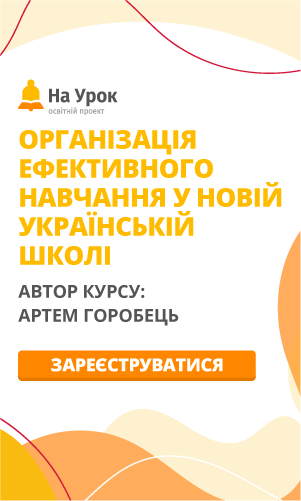

про публікацію авторської розробки
Додати розробку
